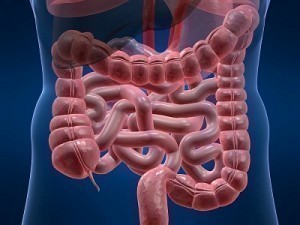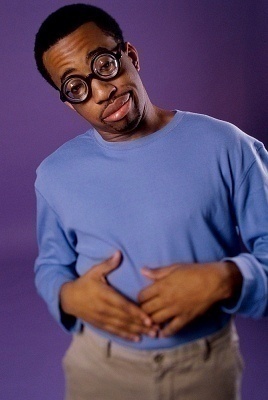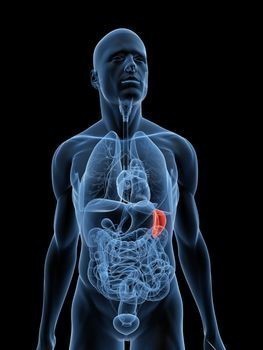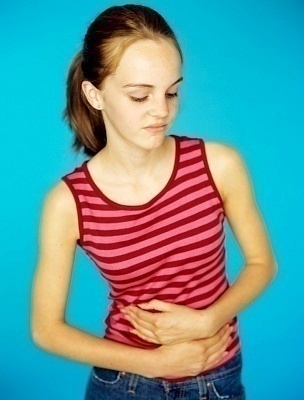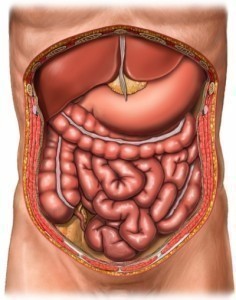What Causes Rectal Bleeding?
Rectal bleeding or hematochezia is the passage of bright red blood from the anus, often mixed with stool and / or blood clots. The bleeding can also originate from the colon or rectum. The blood that is passed will vary in color and this depends on the location of the bleeding in the gastrointestinal tract. Bleeding from the anus, rectum and sigmoid colon usually appears to be a bright red color. If the bleeding occurs from the transverse colon and right colon, the blood tends to have a darker shade and almost appears to be maroon in color.
When the bleeding occurs from the right colon, in some patients, the blood tends to smell foul and is often sticky and black. This is because the blood probably originates from the stomach, where it gets exposed to the acids of the stomach. This turns the color of the blood black. Black, smelly, sticky stool is referred to as melena. Melena occurs when the bleeding is caused in the stomach. The blood is then exposed to acid in the small intestine or colon and over a period of time, it is acted upon by intestinal bacteria that result in the formation of chemicals such as hematin which turn the color of the blood, black. In other words, the presence of melena indicates that the bleeding has probably occurred in the upper gastrointestinal tract.
One must not confuse rectal bleeding with occult gastrointestinal bleeding. Occult bleeding is caused due to slow loss of blood into the upper or lower gastrointestinal tract. There are no visible signs of bright red blood or changes in the stool. Occult bleeding can be detected by testing the stool. It has similar causes as rectal bleeding. It is also associated with anemia.
Causes of Rectal Bleeding
Let us now examine some of the causes of rectal bleeding.
Hemorrhoids
Within the anal canal are located, several cushion-like clumps of tissues that contain blood vessels. These are referred to as hemorrhoids. Anal discomfort or bleeding occurs when there cushion-like hemorrhoids begin to enlarge. When the rectal veins get swollen, it can lead to burning, itching, bleeding and so on. Hemorrhoids can be of three types namely:
- internal hemorrhoids: Often painless, during bowel movements, the patient may notice this rectal mass, in the case of internal hemorrhoids.
- external hemorrhoids: These are painful and are often accompanied with anal itching also. They are easy to spot and appear like a small swelling.
- thrombosed hemorrhoids: Thrombosed hemorrhoids occur when there is a clot formed within the swollen vein. This can lead to pain that can be moderate to severe and might even require a minor surgery by way of treatment.
Fistula
Fistula refers to any abnormal passageway that usually occurs in the digestive tract. However, it can also occur in other parts of the body. There are anal and rectal fistulas which develop in the walls of the anus or rectum and are mostly caused by an inflammation that leads to an abscess which will drain pus and / or blood.
Fissure
An anal fissure is a natural crack or tear in the skin of the anal canal. It is often caused due to the abnormal stretching of the mucous membranes of the anus as in the case of constipation or severe diarrhea. Anal fissures can cause bright red anal bleeding and is accompanied by pain caused during bowel movements.
Diverticulosis
Diverticulosis is an inflammatory condition in which the individual develops small pouches called diverticula in the lining of the colon, or large intestine, that bulge outward through weak spots. Each pouch is called a diverticulum. Diverticula is more common in the sigmoid colon and when inflamed, they may cause bleeding, infections, small tears called perforations or blockages in the colon. Rectal bleeding can occur when a blood vessel in a diverticulum bursts. Diverticulosis typically occurs in people over 40 years of age. It could be caused due to a diet lacking in dietary fibre. It can cause moderate to severe rectal bleeding and may require hospitalization and blood transfusion. Usually, the part of the colon containing the diverticula is surgically removed by way of treatment.
Proctitis and Colitis
Colitis is an inflammation of the colon or large intestine. Proctitis refers to the inflammation of the rectum. Both conditions can lead to bloody stools, diarrhea and cramps amongst other symptoms. Colitis and proctitis can be caused as a consequence of several diseases. These include:
- viral or bacterial infection
- ulcerative colitis
- ulcerative proctitis
- Crohn’s colitis
- ischemic colitis
- radiation colitis
- radiation proctitis
Polyps and Cancer
A colon polyp is a small clump of cells that forms on the lining of the colon which can become cancerous over time. Colon polyps or colon cancer can cause rectal bleeding and bloody stools.
Rectal Prolapse
A medical condition where the walls of the rectum protrude through the anus and show outside the body is known as rectal prolapse. The condition is usually associated with old age, long term constipation and long term diarrhea.
Meckel’s Diverticulum
Sometimes, there is a sac-like protrusion from the small intestine, located at the junction of the small intestine and the colon. This protrusion is referred to as the Meckel’s diverticulum. Some Meckel’s diverticula can secrete acid and this can lead to the formation of ulcers in the inner lining of the diverticulum or in the tissues of the small intestine, situated adjacent to the diverticulum. Gastrointestinal bleeding in young adults and children is often cause due to Meckel’s diverticulum. It can result in maroon, bright red or dark red stools and is often painless.
The above mentioned are some of the causes that lead to rectal bleeding. It is best to consult the advice of a professional medical practitioner to diagnose the cause of rectal bleeding and take adequate measures to treat it.

